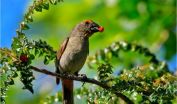(Press-News.org) Putnam Valley, NY. (Sept. 24, 2012) – Two studies in the current issue of Cell Transplantation (21:6), now freely available on-line at http://www.ingentaconnect.com/content/cog/ct/, demonstrate how the use of magnetic particles are a factor that can positively impact on the targeted delivery of transplanted stem cells and to also provide better cell retention.
A research team from the University of British Columbia used focused magnetic stem cell targeting to improve the delivery and transport of mensenchymal stem cells to the retinas of test rats while researchers from Cedars-Sinai Heart Institute (Los Angeles) injected magnetically enhanced cardiac stem cells to guide the cells to their target to increase cell retention and therapeutic benefit in rat models of ischemic/reperfusion injury.
According to study co-author Dr. Kevin Gregory-Evans, MD, PhD, of the Centre for Macular Degeneration at the University of British Columbia, degeneration of the retina - the cause of macular degeneration as well as other eye diseases - accounts for most cases of blindness in the developed world. To date, the transplantation of mensenchymal stem cells to the damaged retina has had "limited success" because the cells reaching the retina have been in "very low numbers and in random distribution."
Seeking to improve stem cell transplantation to the retina, the researchers magnetized rat mesenchymal stem cells (MSCs) using superparamagnetic iron oxide nanoparticles (SPIONs). Via an externally placed magnet, they directed the SPION enhanced cells to the peripheral retinas of the test animals.
"Our results showed that large numbers of blood-borne magnetic MSCs can be targeted to specific retinal locations and produce therapeutically useful biochemical changes in the target tissue," explained Gregory-Evans. "Such an approach would be optimal in focal tissue diseases of the outer retina, such as age-related macular degeneration."
Contact:
Dr. Kevin Gregory-Evans, Centre for Macular Research, Department of Ophthalmology and Visual Sciences, University of British Columbia, 2550 Willow St., Vancouver, BC, Canada, V5Z 3N9
Tel. + 1-604-671-0419
Fax. + 1-604-875-4663
Email: kge30@interchange.unc.ca
Citation: Yanai, A.; Häfeli, U. O.; Metcalfe, A. L.; Soema, P.; Addo, L.; Gregory-Evans, C. Y.; Po, K.; Shan, X.; Moritz, O. L.; Gregory-Evans, K. Focused Magnetic Stem Cell Targeting to the Retina Using Superparamagnetic Iron Oxide Nanoparticles. Cell Transplant. 21(6):1137-1148; 2012.
The cardiac stem cell, said researchers at Cedars-Sinai Heart Institute, represents a promising candidate for regenerating the injured myocardium, the place where they reside. However, because of cyclical cardiac contraction, 'venous washout' is a factor that causes extremely low cell retention and undermines the potential beneficial impact of cell transplantation.
"Because the efficiency of intracoronary stem cell transplantation is limited by low cell retention, we sought to improve cell retention by magnetic targeting," said study lead author Dr. Eduardo Marban.
The researchers injected cardiac stem cells labeled with iron microspheres into the left ventricular cavity of syngenic rats during brief aortic clamping. After 24 hours, they found that placement of a magnet above the heart during and after injection enhanced cell retention by over five-fold.
"The success of cell therapy relies on effective delivery to the desired region," explained Dr. Marban. "In the heart, cardiac contraction results in substantial cell loss during and after cell delivery. We found that magnetic attraction can focus iron-tagged therapeutic agents within a target region as we successfully used magnetism to counteract venous washout and improve cell retention in the contracting heart."
Contact:
Dr. Eduardo Marban, MD, PhD, Cedars of Sinai Heart Institute, 8700 Beverly Blvd., 1090 Davis Research Building, Los Angeles, CA 90048.
Tel. 310-423-7557
Fax. 310- 423- 7637
Email: eduardo.marban@csmc.edu
Citation: Cheng, K.; Malliaras, K.; Li, T.-S.; Sun, B.; Houde, C.; Galang, G.; Smith, J.; Matsushita, N.; Marbán, E. Magnetic Enhancement of Cell Retention, Engraftment, and Functional Benefit After Intracoronary Delivery of Cardiac-Derived Stem Cells in a Rat Model of Ischemia/Reperfusion. Cell Transplant. 21(6):1121-1135; 2012.
INFORMATION:
The Coeditor-in-chief's for CELL TRANSPLANTATION are at the Diabetes Research Institute, University of Miami Miller School of Medicine and Center for Neuropsychiatry, China Medical University Hospital, TaiChung, Taiwan. Contact, Camillo Ricordi, MD at ricordi@miami.edu or Shinn-Zong Lin, MD, PhD at shinnzong@yahoo.com.tw or David Eve, PhD at celltransplantation@gmail.com
News release by Florida Science Communications www.sciencescribe.net
Cambridge, Mass. - September 24, 2012 - It has long been known that diversity of form and function in birds' specialized beaks is abundant. Charles Darwin famously studied the finches on the Galapagos Islands, tying the morphology (shape) of various species' beaks to the types of seeds they ate. In 2010, a team of Harvard biologists and applied mathematicians showed that Darwin's finches all actually shared the same developmental pathways, using the same gene products, controlling just size and curvature, to create 14 very different beaks.
Now, expanding that work to ...
DURHAM, N.H. – Four decades of active research and debate by the solar physics community have failed to bring consensus on what drives the sun's powerful coronal mass ejections (CMEs) that can have profound "space weather" effects on Earth-based power grids and satellites in near-Earth geospace.
In a paper just published in Nature Physics, an international team of space scientists, including a researcher from the University of New Hampshire's Space Science Center (SSC), explains the mysterious physical mechanisms underlying the origin of CMEs. Their findings, based on ...
September 24, 2012 - People often remark that people of a different race "all look alike." However, when we have trouble recognizing people from another race, it may actually have little to do with the other person's race. Instead, new research finds that that we can improve our memory of members of another race by identifying ourselves as part of the same group. Such identification could improve everything from race relations to eyewitness identification.
"One of the most robust phenomena in social perception is the finding that people are better at remembering people ...
Vanderbilt University researchers are reporting today that there is insufficient evidence to support the use of medical interventions in adolescents and young adults with autism.
Despite studies that show that many adolescents and young adults with autism spectrum disorders are being prescribed medications, there is almost no evidence to show whether these medications are helpful in this population, the researchers said.
These findings are featured in the Sept. 24 issue of Pediatrics.
"We need more research to be able to understand how to treat core symptoms of autism ...
COLUMBUS, Ohio -- The presidential debates offer viewers a lot of substance about the issues of the campaign -- but postdebate media coverage can undermine the value they have for voters, a new study suggests.
Results showed that postdebate coverage that focused on the debate as a competition led viewers to think less about policy issues. By comparison, coverage that focused on the substance of the discussion increased the likelihood that viewers would come away with specific thoughts about candidates' policy proposals.
The researchers conducted two different studies ...
A low-cost new material that could lead to innovative technologies to tackle global warming has been discovered by scientists at The University of Nottingham.
The porous material, named NOTT-300, has the potential to reduce fossil fuel emissions through the cheaper and more efficient capture of polluting gases such as carbon dioxide (CO2) and sulphur dioxide (SO2). The research, published in the scientific journal Nature Chemistry, demonstrates how the exciting properties of NOTT-300 could provide a greener alternative to existing solutions to adsorb CO2 which are expensive ...
People with AIDS are at increased risk for developing esophageal and stomach carcinoma as well as non-Hodgkin lymphomas (NHLs), according to a new study in Gastroenterology, the official journal of the American Gastroenterological Association.
"People diagnosed with AIDS are living longer due to improved therapies. However, they remain at increased risk of developing a number of different cancers," said E. Christina Persson, PhD, of the National Cancer Institute and lead author of this study. "An elevated risk of esophageal and stomach cancers had been observed before, ...
This press release is available in Spanish.
Getting a head start on stopping soil copper buildup will now be a bit easier, thanks to studies by U.S. Department of Agriculture (USDA) scientists. This research could help Pacific Northwest farmers develop long-term irrigation management strategies to protect crops from potentially dangerous soil copper levels.
Scientists with USDA's Agricultural Research Service (ARS) conducted a laboratory investigation to assess how copper levels in wastewater used for irrigation affected crop performance and soil microbial activities. ...
A team of scientists with The Cancer Genome Atlas program reports their genetic characterization of 800 breast tumors, including finding some of the genetic causes of the most common forms of breast cancer, providing clues for new therapeutic targets, and identifying a molecular similarity between one sub-type of breast cancer and ovarian cancer.
Their findings, which offer a more comprehensive understanding of the mechanisms behind each sub-type of breast cancer, are reported in the September 23, 2012 online edition of the journal Nature.
The researchers, including ...
SALT LAKE CITY, Sept. 23, 2012 – A University of Utah study suggests something amazing: Periodic changes in winds 15 to 30 miles high in the stratosphere influence the seas by striking a vulnerable "Achilles heel" in the North Atlantic and changing mile-deep ocean circulation patterns, which in turn affect Earth's climate.
"We found evidence that what happens in the stratosphere matters for the ocean circulation and therefore for climate," says Thomas Reichler, senior author of the study published online Sunday, Sept. 23 in the journal Nature Geoscience.
Scientists ...

